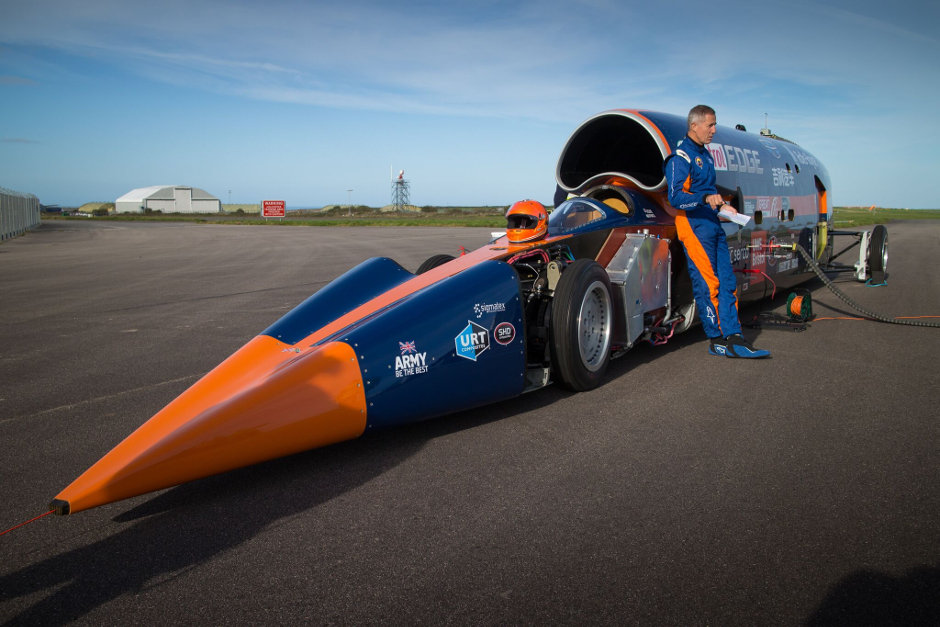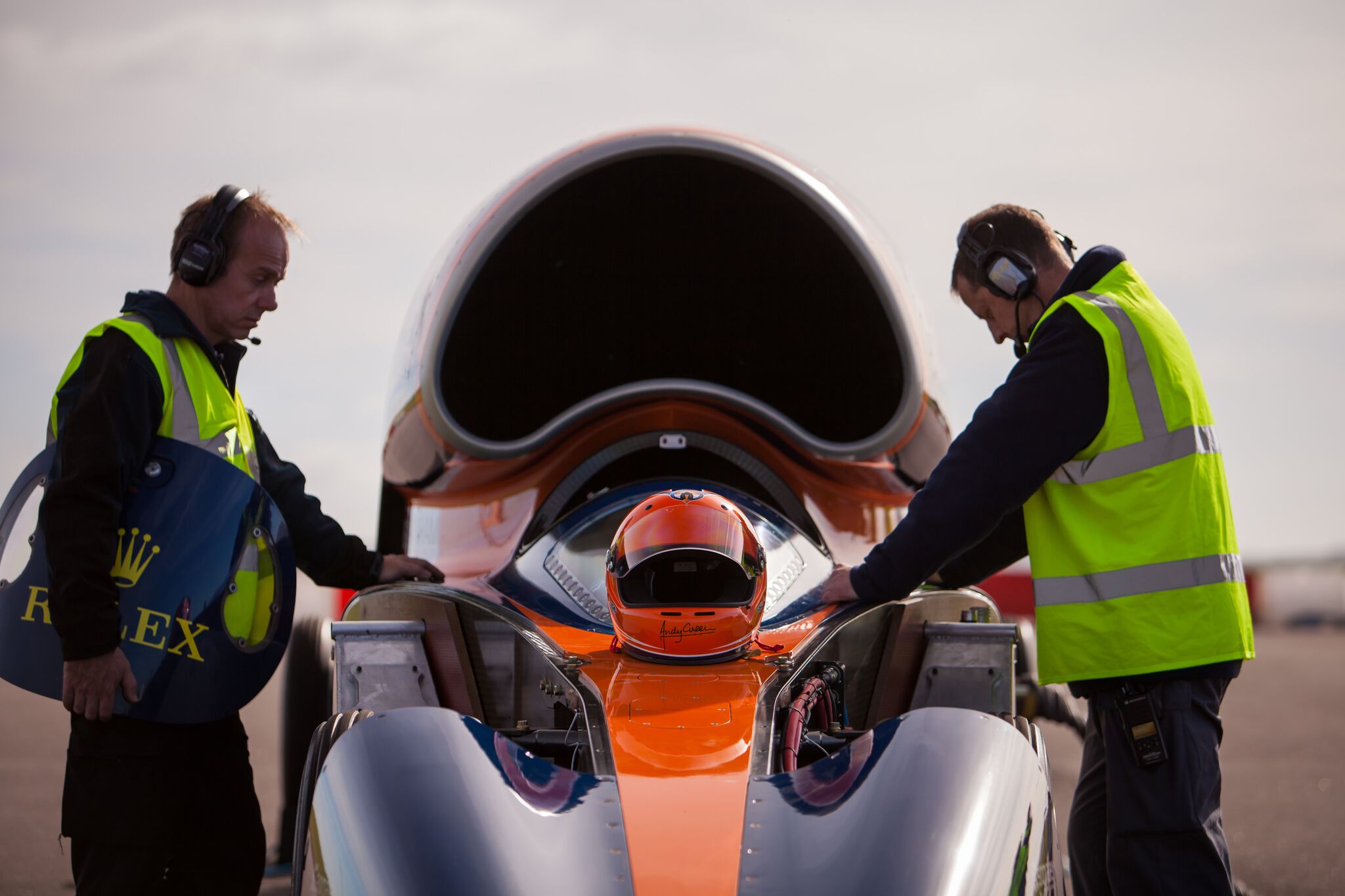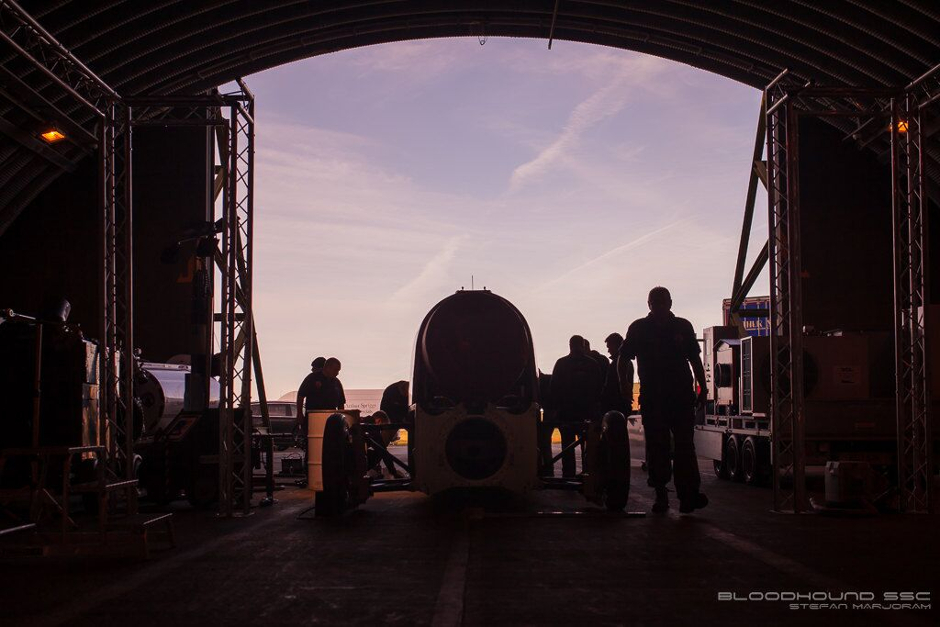In front of a crowd of an estimated 4,000 spectators, the vehicle, driven by RAF pilot Andy Green, completed two high speed trips up the airport’s 1.7 mile (2.7km) long runway, pushing the vehicle’s jet engine to full afterburner and accelerating to 200mph in around nine seconds.
As reported by The Engineer earlier this month (October 2017) the latest trials mark a key milestone in a dynamic testing process that will culminate in an assault on the world land speed record at Hakskeen Pan, a dried-out lake bed in South Africa’s Northern Cape at some point in 2019.

The existing record of 763mph was set by Green in the jet-powered Thrust SSC vehicle in October 1997. Bloodhound initially plans to push the existing record above 800mph before aiming for 1,000mph, a speed that the project’s chief aerodynamicist Ron Ayers believes may never be beaten.
https://vimeo.com/240173430
The current dynamic tests, which are aimed at testing the performance of the vehicle’s steering, brakes, suspension, data systems and other functions - were preceded by static tests carried out in September in which the vehicle’s EJ200 jet engine (the turbofan typically used in Eurofighter Typhoon) was fired up for the first time. The team has been building up to the latest tests by running at progressively higher speeds throughout the month.
As previously reported, the testing has been broadly positive, with the engine in particular already outperforming expectations.

“We knew it was a very capable engine,” the project’s operations engineer Stuart Edmondson told The Engineer. “But it’s really surprised us how quickly it does accelerate and the power that’s exerted into the car is actually far more impressive than we expected on the modelling.”
The next step, according to Bloodhound technical director Mark Chapman, is to take the vehicle to South Africa and begin testing other elements of the vehicle, including the aluminium wheels developed especially for the Hakskeen Pan surface. The vehicle tested at Newquay used refurbished Dunlop tyres originally developed for Thrust SSC.

Chapman said that the team hopes to get the vehicle unto around 600mph next year. After this, they will begin integrating and testing the Norwegian developed rocket engines that they hope will propel Bloodhound into the record books.
The group is also considering replacing the combustion engine currently used to power the rocket fuel pump with an electric alternative. Chapman told The Engineer that an electric option would enable the additional packaging flexibility, and could help the team finesse the vehicle’s centre of gravity as it aims for ever higher speeds.
CLICK HERE TO ACCESS ALL OF THE ENGINEER’S BLOODHOUND SSC COVERAGE




Project to investigate hybrid approach to titanium manufacturing
What is this a hybrid of? Superplastic forming tends to be performed slowly as otherwise the behaviour is the hot creep that typifies hot...